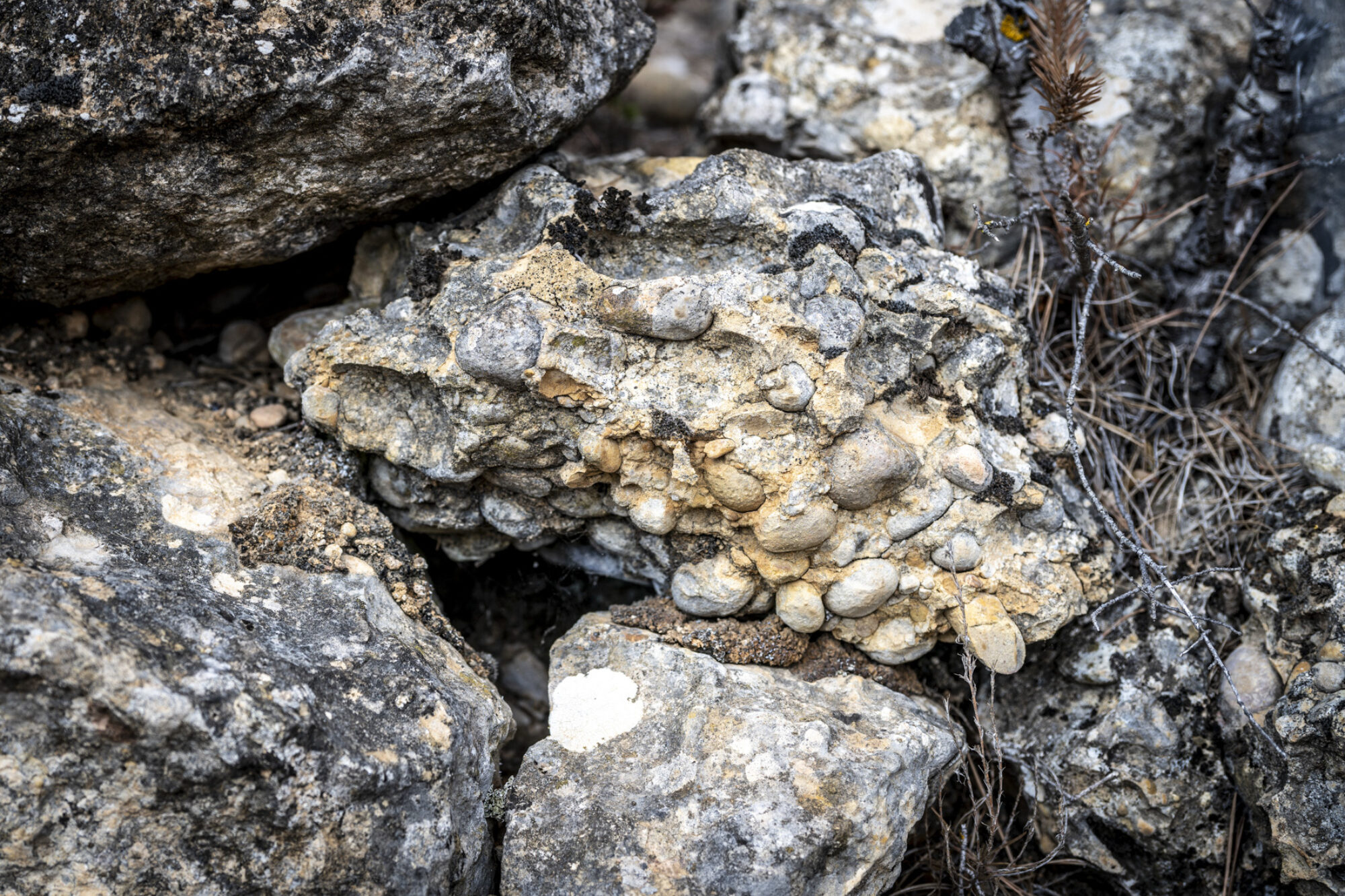
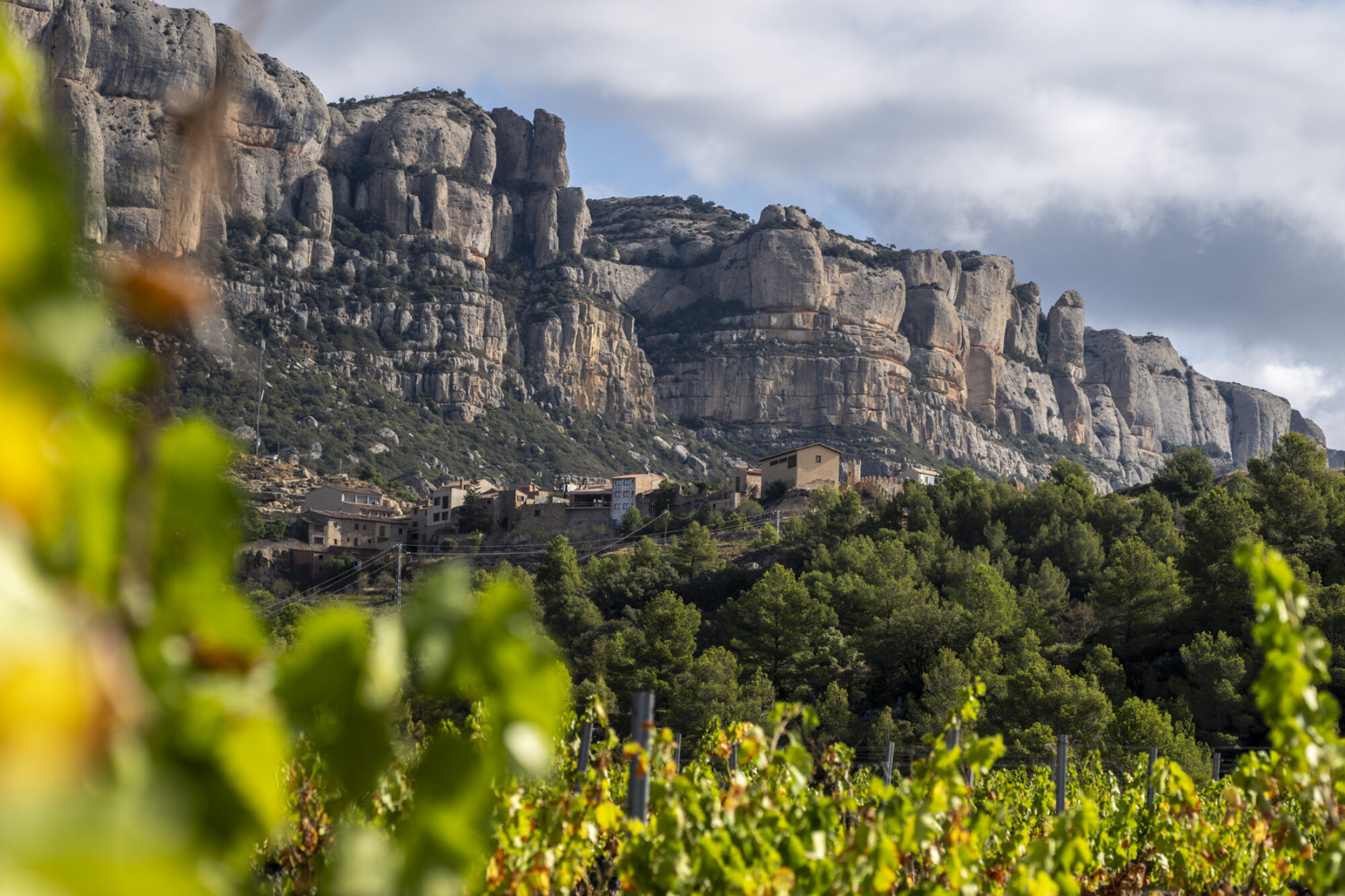
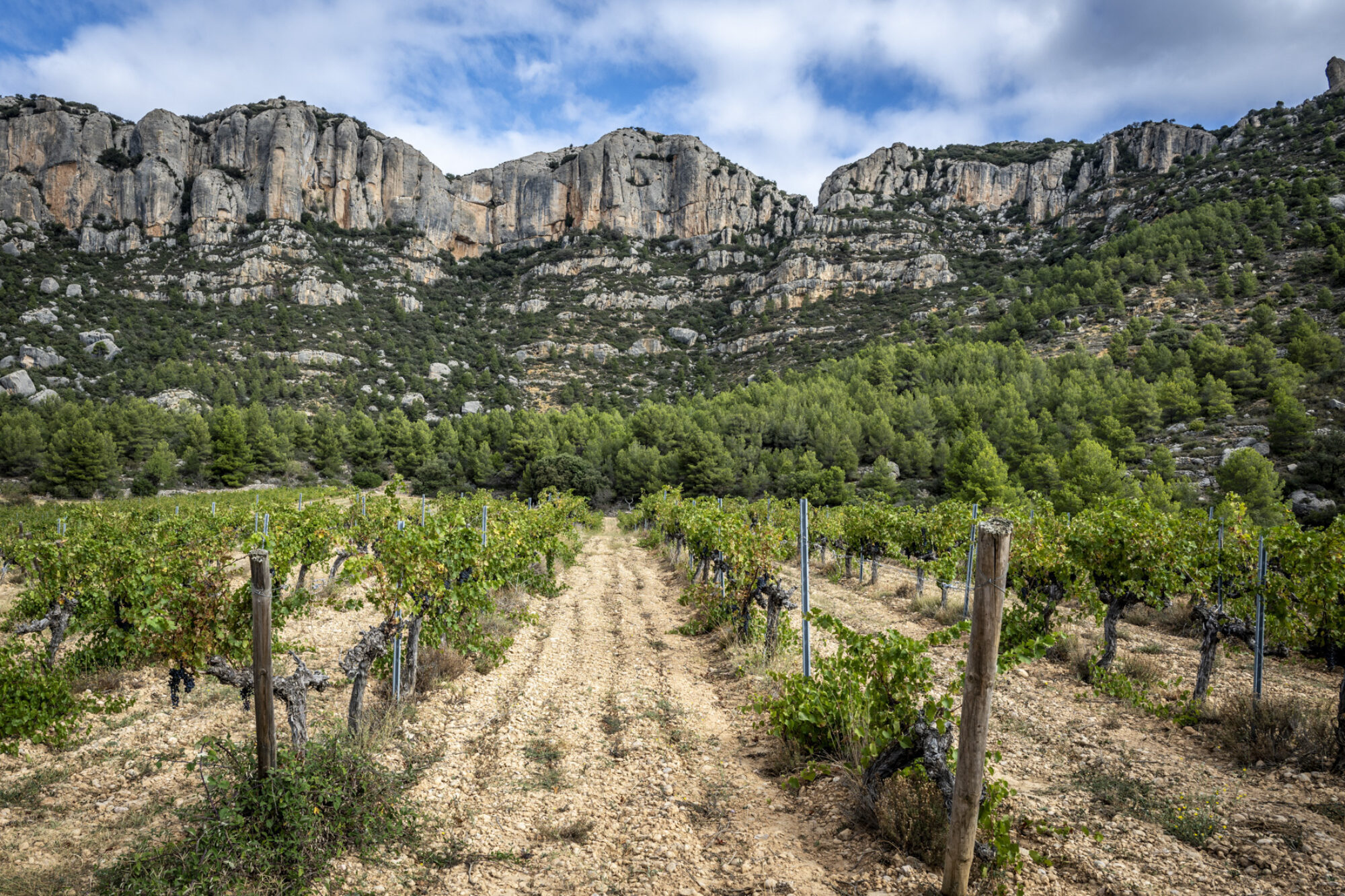
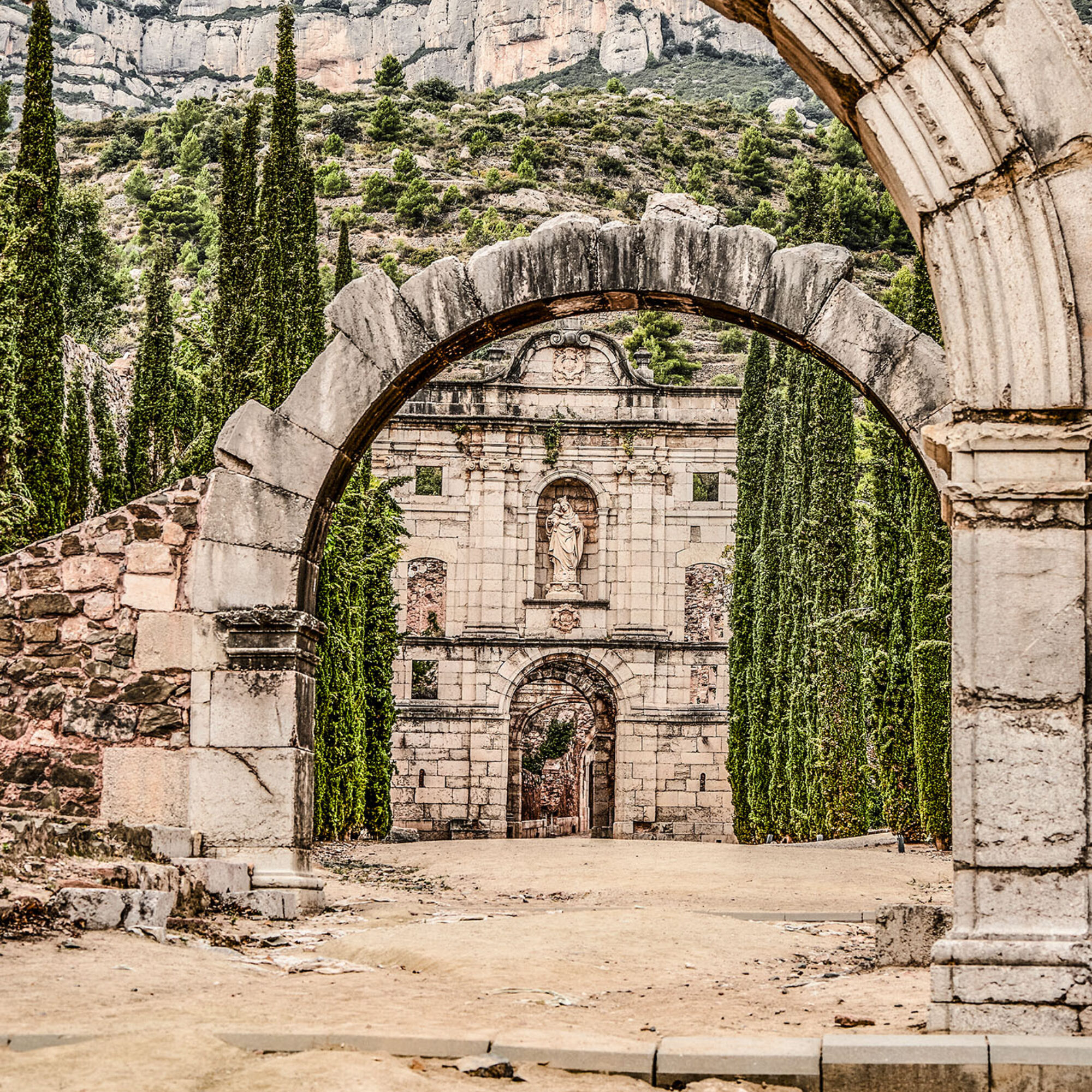
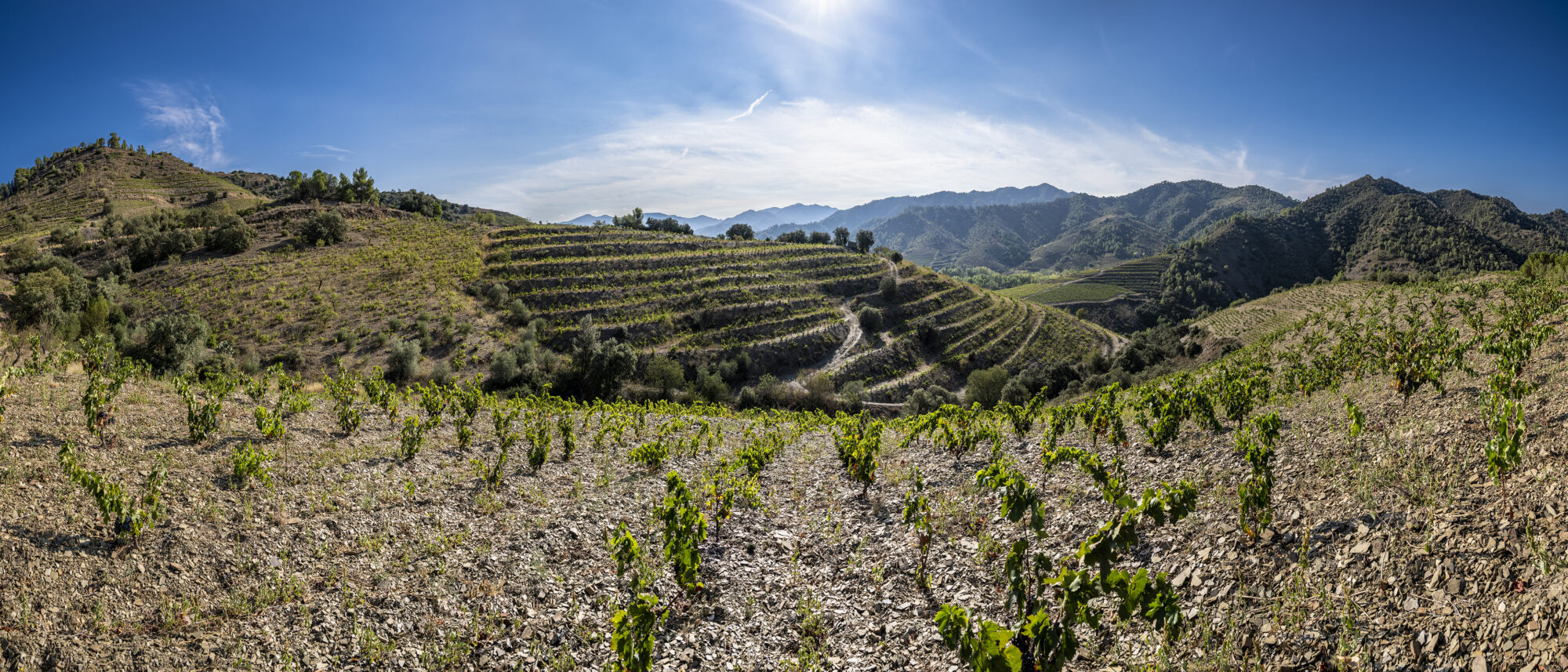
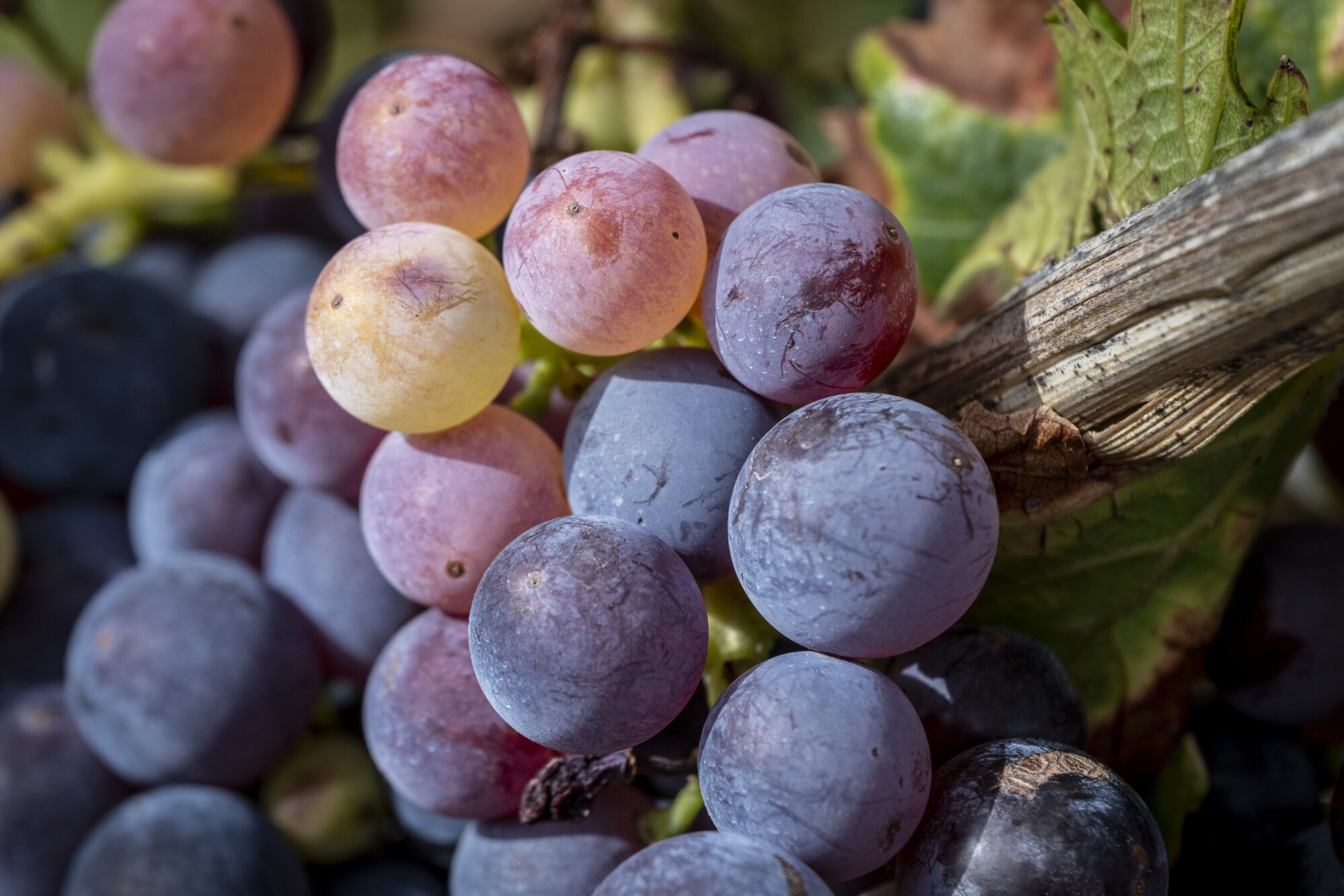
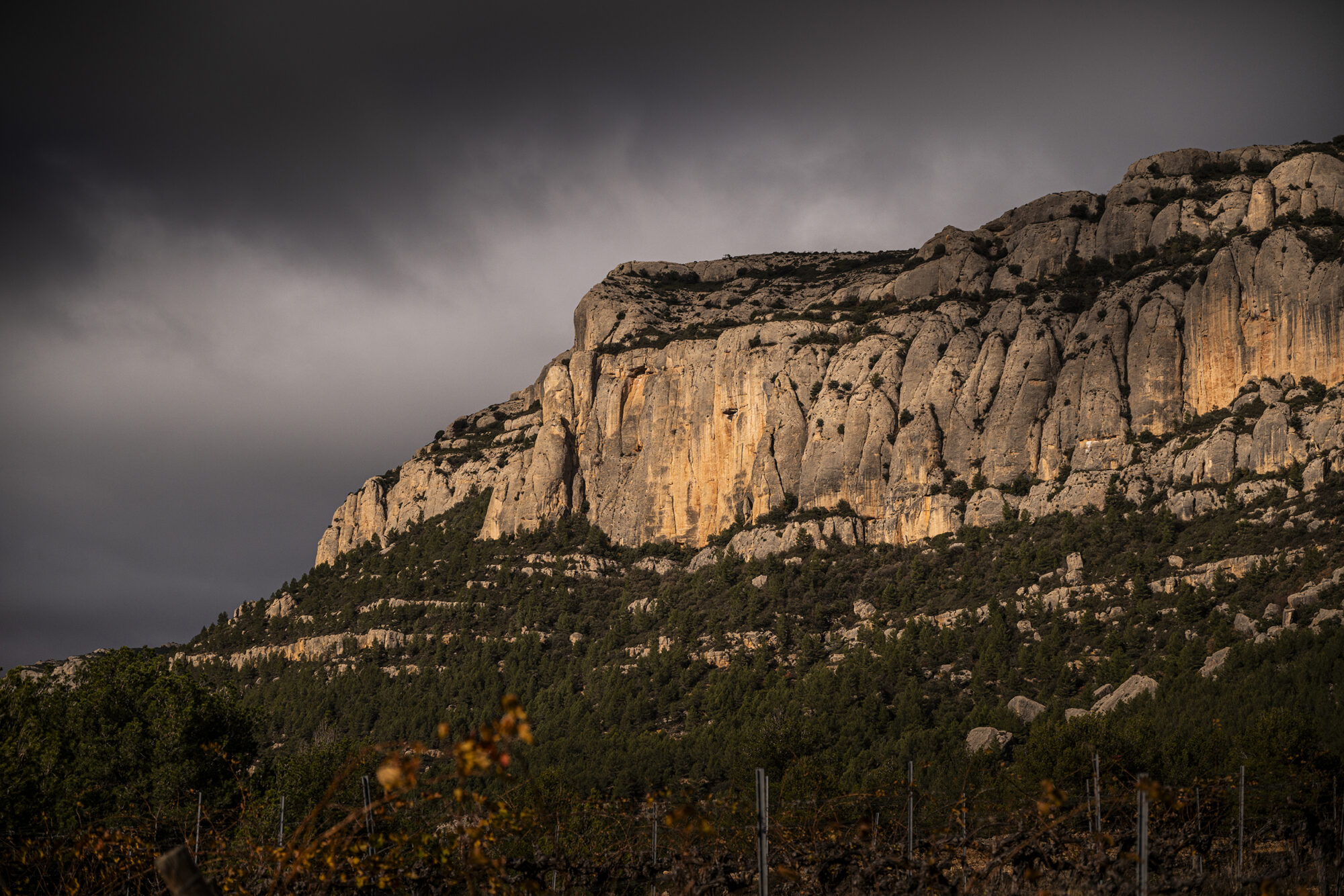
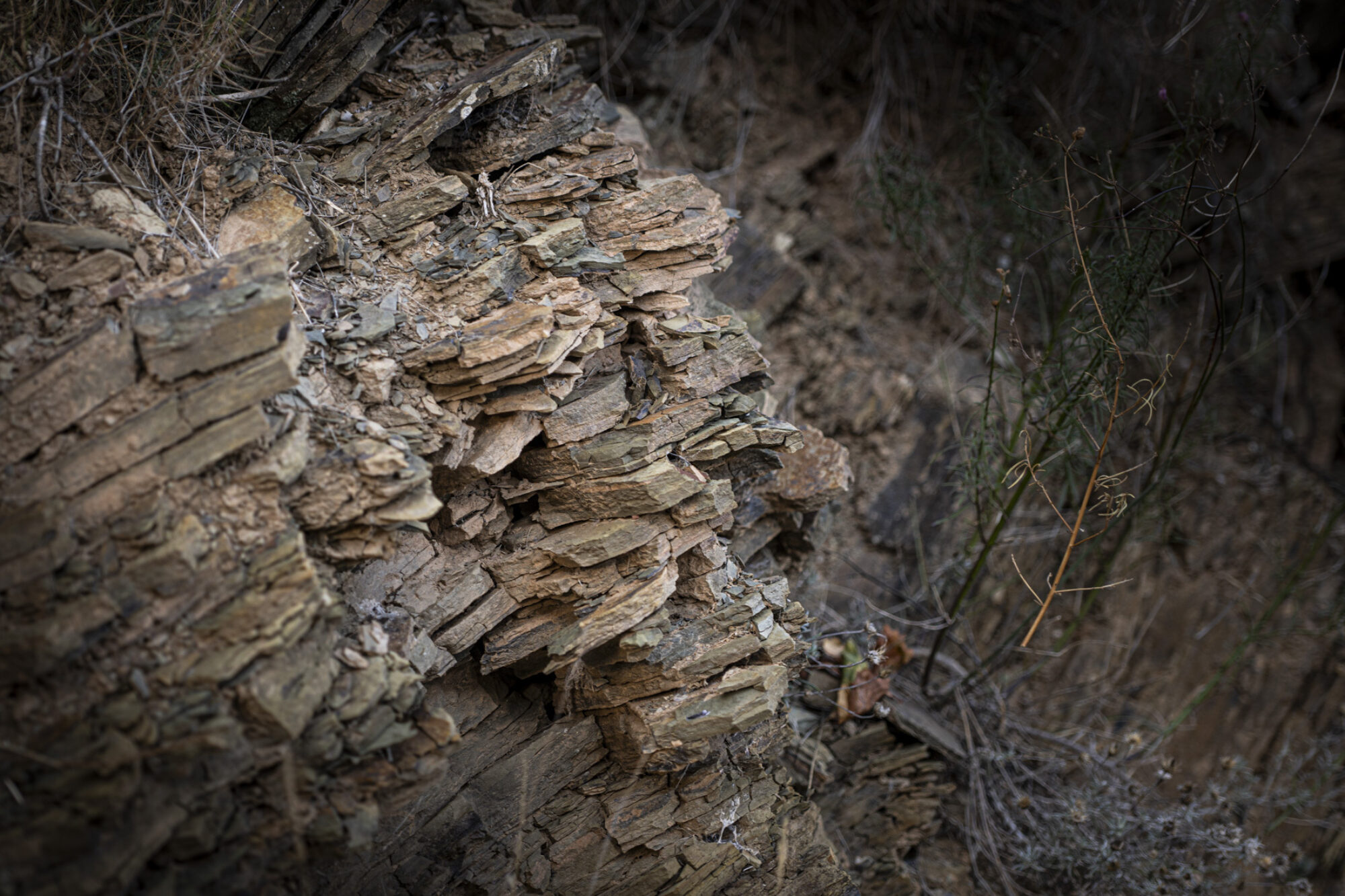
During the Carboniferous period, more than 300 million years ago, the erosion of the mountain range formed by the collision of two large continents metamorphosed clays and sandstones into the famous llicorella of El Priorat.
Llicorella
These soils are made up of slates and phyllites and are known as llicorella: a metamorphic rock with a laminar structure formed by the compacting of clays. They are poor soils with high mineral content and little water retention capacity. The results are intense, concentrated, mineral wines, with great warmth and complexity.
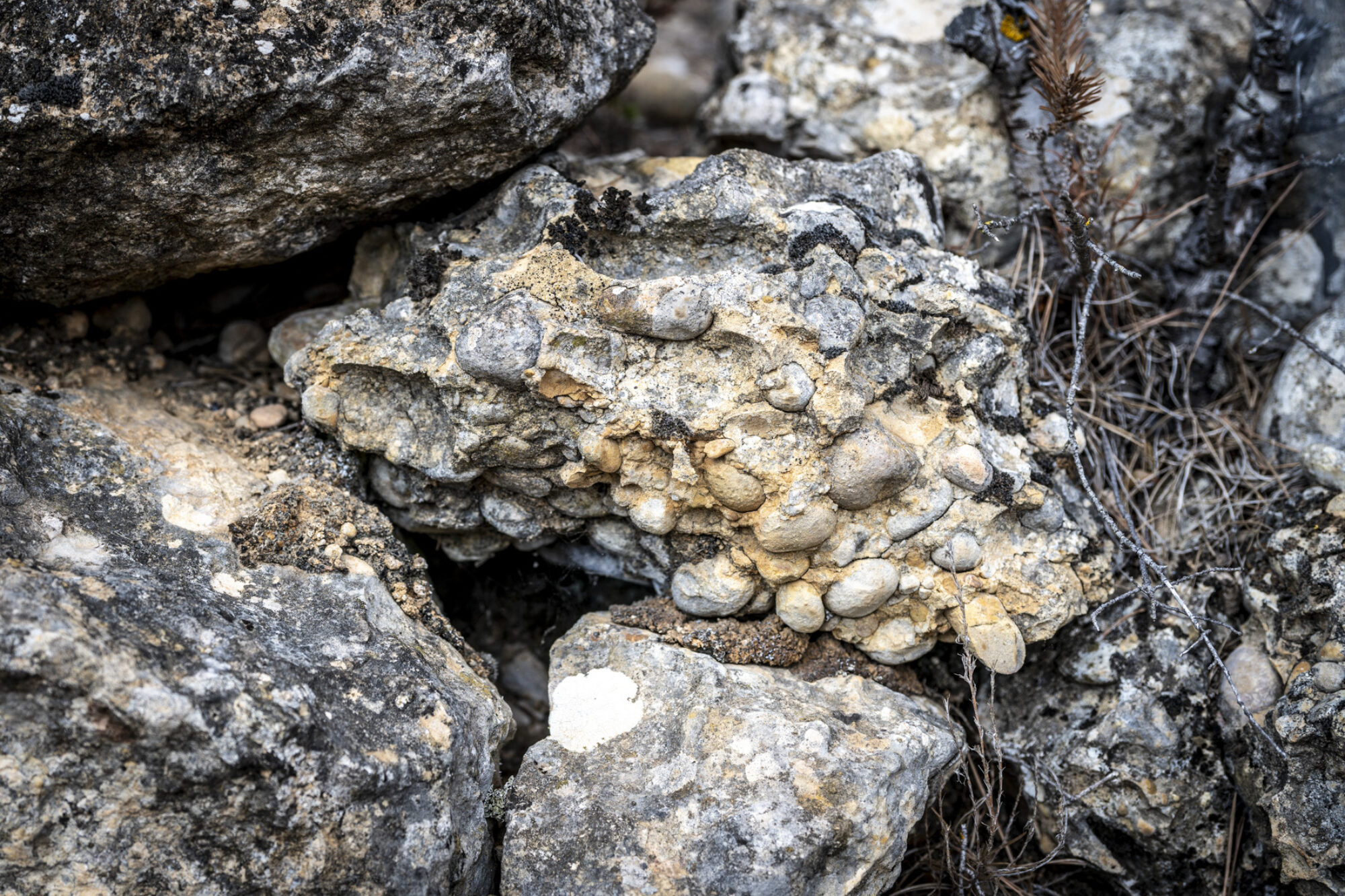
250 million years ago, a large quantity of sediments were eroded and deposited in the form of reddish sandstones and conglomerates and then later submerged by a sea that occupied a large part of modern-day Catalonia. The dolomites and limestones laid down during this long period now form the cliffs at Siurana.
Red clay with flint nodules
La Morera de Montsant is rich in flint, a sedimentary rock formed by siliceous minerals such as quartz, which occurs in the form of nodules in the red clay, another sedimentary rock that is highly impermeable but not very hard. It results in structured, fresh, acidic wines, with metallic, extremely vertical profiles.
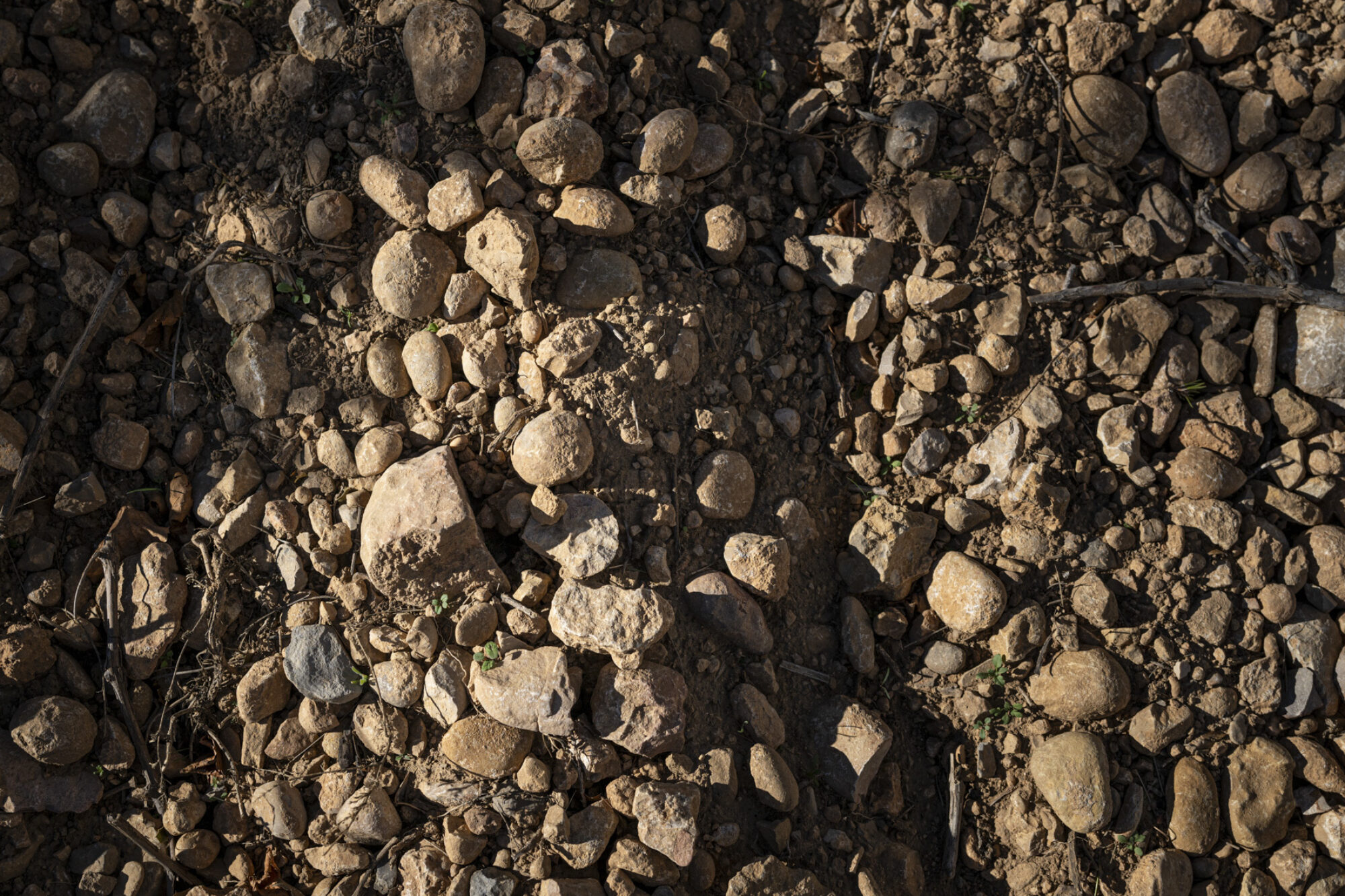
65 million years ago, the Priorat was part of a desert plain where clay and sandstone were laid down as sediment and, in some places, lakes and strata of lacustrine calcareous rocks were formed, such as the limestone on which the village of La Morera stands.
This tranquillity ended during the formation of the Pyrenees, an event that completely changed the geology of all Catalonia and, in particular, that of El Montsant. The deposition of large quantities of conglomerates, mostly made up of chalky pebbles, gave rise to the imposing cliffs of Montsant.
Limestone gravels and conglomerate marls
The presence of gravels and marls in the soil is caused by the accumulation of large amounts of conglomerate materials in these places. Marls are clayey rocks rich in calcium carbonate, while gravels are detrital rocks, made up of fragments of other rocks, minerals and calcium carbonate.
They result in light, structured, unctuous wines, sometimes with a saline component.
